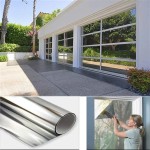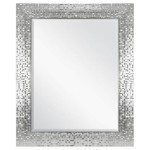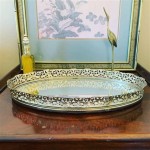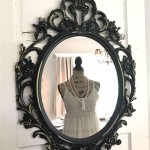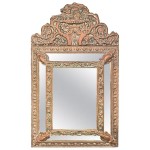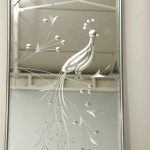Do Convex Mirrors Make Images Smaller or Bigger? Understanding Image Formation
Convex mirrors, characterized by their outwardly curved reflecting surface, are employed in various applications due to their unique image-forming properties. Understanding how these mirrors affect the size of reflected images is crucial for their effective utilization.
Key Properties of Convex Mirror Images
Convex mirrors consistently produce images with specific characteristics:
- Virtual: The reflected rays do not converge to form a real image. The image appears to be behind the mirror's surface.
- Upright: The image maintains the same orientation as the object.
- Diminished/Smaller: The image formed is always smaller than the object being reflected.
The Physics Behind Diminished Images
The diminished image size in convex mirrors results from the diverging nature of reflected light rays. When parallel rays strike the curved surface, they reflect outwards, spreading apart. The human eye perceives these diverging rays as originating from a point behind the mirror, creating a virtual image closer to the mirror and smaller than the original object. This divergence effectively shrinks the field of view, allowing a wider area to be reflected in the mirror.
Focal Point and Virtual Image Location
The focal point of a convex mirror is the virtual point behind the mirror where reflected rays appear to converge when incoming rays are parallel. The distance between the focal point and the mirror's surface is called the focal length. The virtual image formed by a convex mirror is always located between the focal point and the mirror's surface. The exact location and size of the image depend on the object's distance from the mirror. As the object moves closer, the image also moves closer to the mirror and becomes slightly larger, though it remains smaller than the object.
Applications Leveraging Diminished Images
The property of creating smaller images finds practical use in various scenarios:
- Security Mirrors: Convex mirrors provide a wider field of view, enabling security personnel to monitor larger areas like stores or hallways. The diminished image displays a broader perspective, although with reduced detail.
- Automotive Side-View Mirrors: Passenger-side mirrors often employ convex surfaces to expand the driver's field of vision, reducing blind spots. The "objects in mirror are closer than they appear" warning reflects the diminished image size.
- Traffic Mirrors: Placed at blind corners or intersections, convex mirrors allow drivers to see oncoming traffic, improving road safety. The wider field of view provided by these mirrors is critical for navigating challenging visibility conditions.
Comparing Convex Mirrors with Concave Mirrors
Convex mirrors differ significantly from concave mirrors in their image formation:
- Concave mirrors can produce both real and virtual images depending on the object's location. They can magnify images, creating larger virtual images when the object is close and real, inverted images when the object is further away.
- Convex mirrors always produce virtual, upright, and diminished images, regardless of the object's distance.
Understanding Field of View
The diminished image size in convex mirrors directly relates to their broader field of view. By creating a smaller representation of the reflected area, a convex mirror can encompass a larger scene. This wide-angle view is essential for applications requiring enhanced situational awareness, such as surveillance and driving.
Ray Diagrams in Convex Mirrors
Ray diagrams help visualize image formation in convex mirrors. Typically, two rays are used:
- A ray parallel to the principal axis: After reflection, this ray appears to originate from the focal point.
- A ray directed towards the center of curvature: This ray reflects back along the same path.
The intersection of these reflected rays (or their extensions behind the mirror) pinpoints the location of the virtual image.
The Role of Curvature
The degree of curvature in a convex mirror influences the size of the image and the field of view. A more sharply curved mirror yields a smaller image and a wider field of view. Conversely, a less curved mirror produces a slightly larger image and a narrower field of view. The specific curvature is selected based on the intended application and the required balance between image size and field coverage.
How Do Reflections From Convex Mirrors Make Objects Appear Smaller Quora

Convex Mirrors And Objects Larger Than The Mirror

Convex Mirrors And Objects Larger Than The Mirror
Objects In The Mirror Are Actually Images Article Khan Academy
Objects In The Mirror Are Actually Images Article Khan Academy
Can A Convex Mirror Form Magnified Image Quora

Why Objects In The Mirror Are Closer Than They Appear Science Abc

How To Choose The Right Convex Mirror Safety Xpress
Why Does The Car Side Mirror Display Objects Appear Further Than They Are Not Just Make As Quora

Convex Mirrors And Objects Larger Than The Mirror

